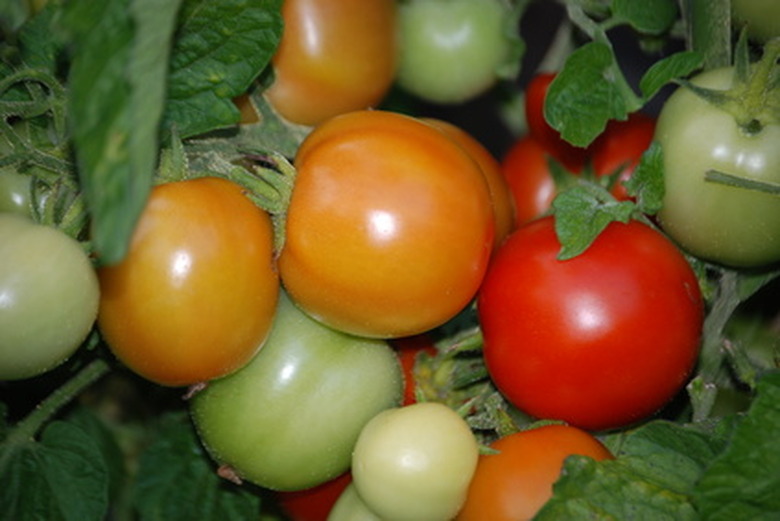Caterpillars That Eat Tomato Plants
Tomatoes are the queen of the garden, but nothing ruins a tomato crop faster than a caterpillar attack. Tomatoes are susceptible to a number of different kinds of worm infestations. Most of these can be controlled if you properly identify the type of caterpillar that is feeding on your tomato crop.
Tomato Hornworm
The most common caterpillar that feeds on tomatoes, especially in the northern United States, is the tomato hornworm. According to the Colorado State University Extension Service, these worms grow 3 to 4 inches long, and sport a scary-looking horn at their tail end. A hornworm infestation is characterized by a sudden loss of tomato plant leaves, and tell-tale green droppings under the plants. The worms themselves are green with black and white markings, similar to those of a monarch caterpillar; however the horn makes it easy to distinguish between the two. The Colorado Extension advises that hornworms are easily controlled by the biological insecticide Bacillus thuringiensis, which is sold under a number of commercial names like Dipel and Caterpillar Attack.
- Tomatoes are the queen of the garden, but nothing ruins a tomato crop faster than a caterpillar attack.
- The Colorado Extension advises that hornworms are easily controlled by the biological insecticide Bacillus thuringiensis, which is sold under a number of commercial names like Dipel and Caterpillar Attack.
Tomato Fruitworm
According to the Clemson University Cooperative Extension, the tomato fruitworm is the most damaging insect to tomato crops in South Carolina, and causes extensive damage elsewhere through the southern United States, although it ranges from northern Canada as far south as Argentina. Tomato fruitworms feed on tomato leaves as well as fruit, and also eat corn, cotton, soybeans, peppers and other garden vegetables. The caterpillar stage is a fat, leaf-green, segmented worm, and the adult moth is a pale yellow-olive color with a dark spot on each wing. Tomato fruitworm is primarily controlled through biological interventions, particularly by use of parasitic wasps.
Tomato Pinworm
The tomato pinworm is a small insect pest only a few millimeters long. According to the North Carolina State University Extension Service, the tomato pinworm is primarily identified by its effects: It folds tomato leaves and webs them together, and bores into stems, buds and fruit leaving multiple small holes. As with other tomato insect pests, maintaining a clean environment free of decaying leaves and rotting fruit helps deter these worms. Insecticidal soaps or red pepper spray may also be an effective deterrent.
- According to the Clemson University Cooperative Extension, the tomato fruitworm is the most damaging insect to tomato crops in South Carolina, and causes extensive damage elsewhere through the southern United States, although it ranges from northern Canada as far south as Argentina.
- According to the North Carolina State University Extension Service, the tomato pinworm is primarily identified by its effects: It folds tomato leaves and webs them together, and bores into stems, buds and fruit leaving multiple small holes.
